Dehydrating sourdough starter to have a back up on hand or to share with a friend! Dehydrated starter is a great way to preserve and store your sourdough starter. Learn why and how.
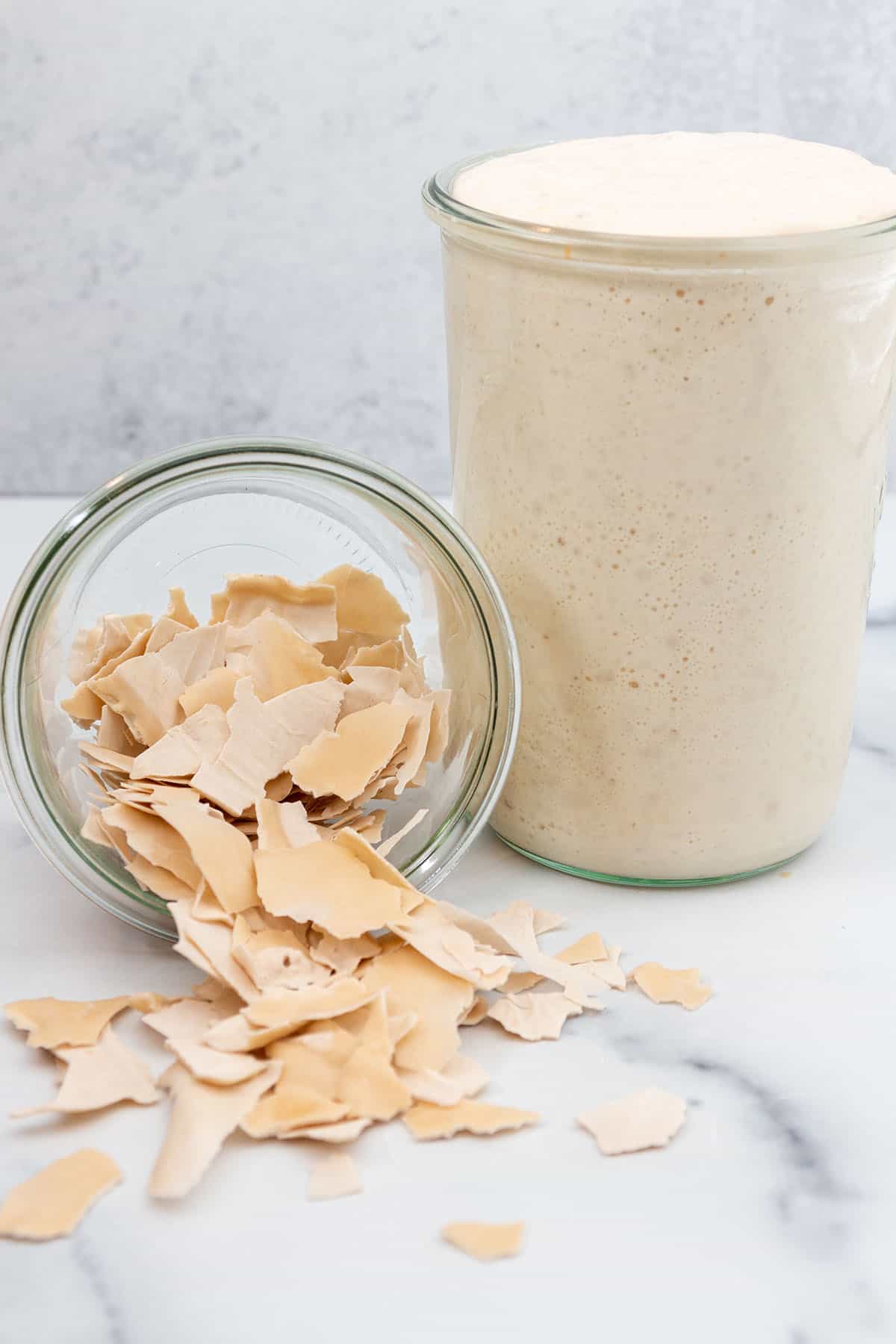
Are you officially a sourdough fanatic? Or maybe still just starting out?
Whichever stage of sourdough you are in, it is a great idea to always have a back up on hand just in case something were to happen to your starter.
This almost happened to me, and I was devastated when I had to throw out my 3 year old starter because I didn't have any dried out.
Luckily, I had given some to a friend and she gifted it right back!
Now I make sure I have some dried starter on hand in case this were to ever happen again.
Don't have a starter yet? Check out my how to make your own sourdough starter guide.
To prevent your starter from growing mold or bacteria make sure it is properly cared for. Learn how to feed and maintain a sourdough stater.
Jump to:
Why Would you Dehydrate a Starter
There are a few reasons why you would want to dehydrate a sourdough starter:
- To keep a backup in case your main starter goes bad
- To share with someone else
- Vacation or extended time off from baking
Dehydrating sourdough starter would not be the best option for shorter term storage, because it can take a few feeding to bring back to life.
If you only need to store it for a week or two, it's best to just keep it in the refrigerator.
Having a Backup
While starters are typically very hearty and can withstand some neglect, they are also not invincible.
If left unfed or in poor conditions, starters can build up mold or bacteria. Once that happens, there really is no reviving it and the entire jar is contaminated. Meaning you have to throw it all away.
That's why having a back up on hand is so crucial.
Sharing
Sharing starter with a friend is a great way to get them going with out all the work and time.
Having dried out starter means it can be ready to bake with it just a few feedings.
It is also a great way to send it to someone.
Time Off
If you are taking a longer vacation, or some needed time off from baking, having a dehydrated starter will make sure that you can return whenever you are ready.
While a starter can also be stored in the refrigerator, it just won't keep as long as dried starter.
In the summer months I tend to not bake as much, so my main starter lives in the fridge most the time with very few feedings.
To make sure I still have an active starter when i'm ready to get back at it, it's nice to know I have a back up in case my liquid one goes bad.
How to Dehydrate
Step 1: First, feed the starter with equal parts flour and water in grams and let it sit 6-8 hours to rise.
Active starter is easier to revive vs an inactive starter. While sourdough discard can be dried out, it could take more feedings to bring back.
Step 2: Once the starter is active, take a baking sheet and line it with parchment paper.
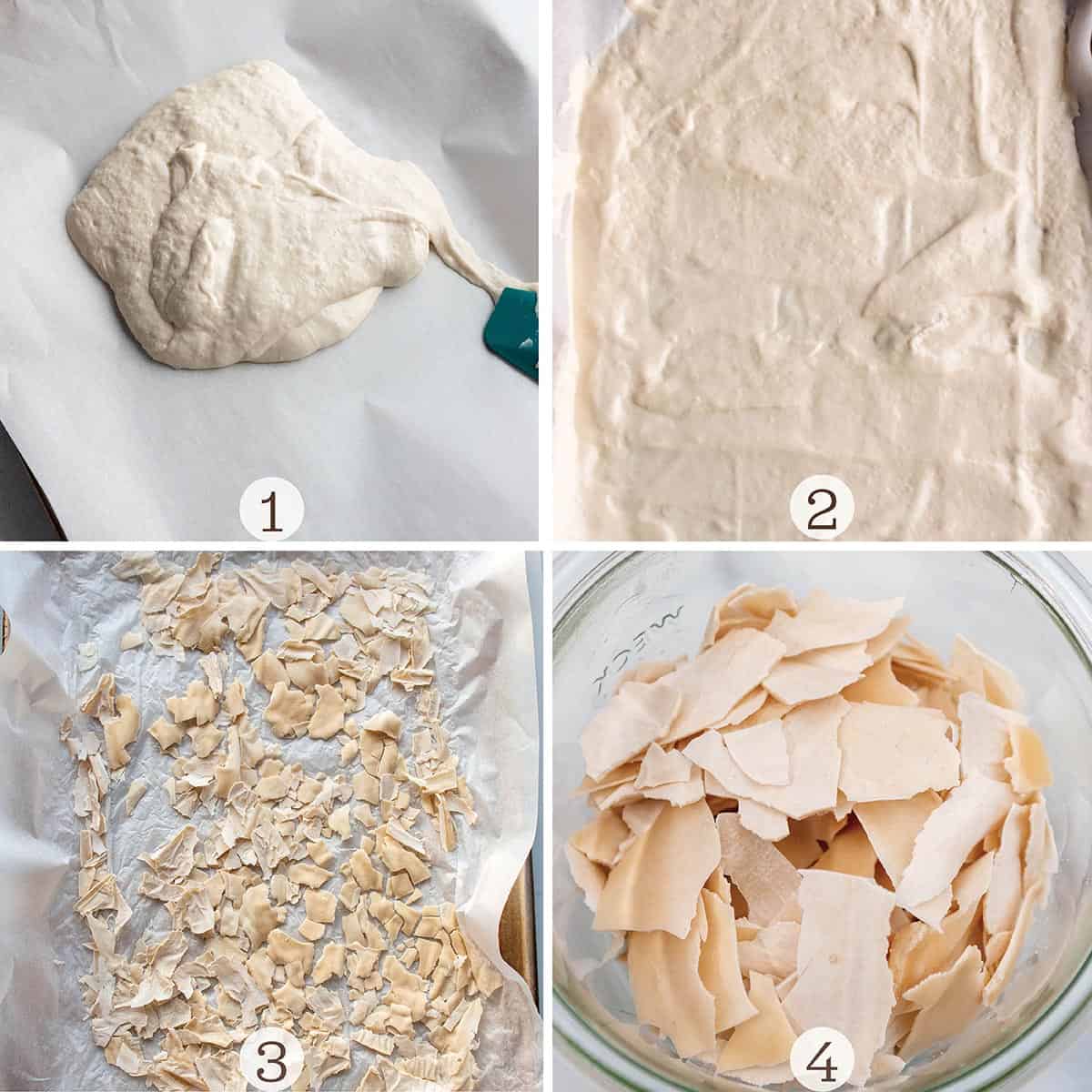
Step 3: Take some active starter and spread it out on the parchment paper. It just needs to be a thin even layer. The amount really does not matter. (Image 1).
Step 4: It will feel like you are painting the parchment with the starter. Using a basting brush or spatula can be helpful. Try to create as thin of a layer as possible. (Image 2).
If some areas are thicker than others it wont dry at the same rate. Try to make it as even and thin as possible.
Step 5: Let the pan sit out on the counter until the starter is complexly dry and brittle. This can take from 12 hours up to a couple of days depending on the atmosphere of your house or how thick you spread it.
It's done when it cracks and breaks up really easily. (Image 3).
Some will say to put in the oven with the light on. While this works great, it can lead to it being baked which will kill the yeast. We want to dry it out, not accidentally bake it. The counter will work just fine.
Step 6: Once it is dry, peel it off the paper and break it up into pieces. It will look like dried out paint chips. (Image 4).
How to Store
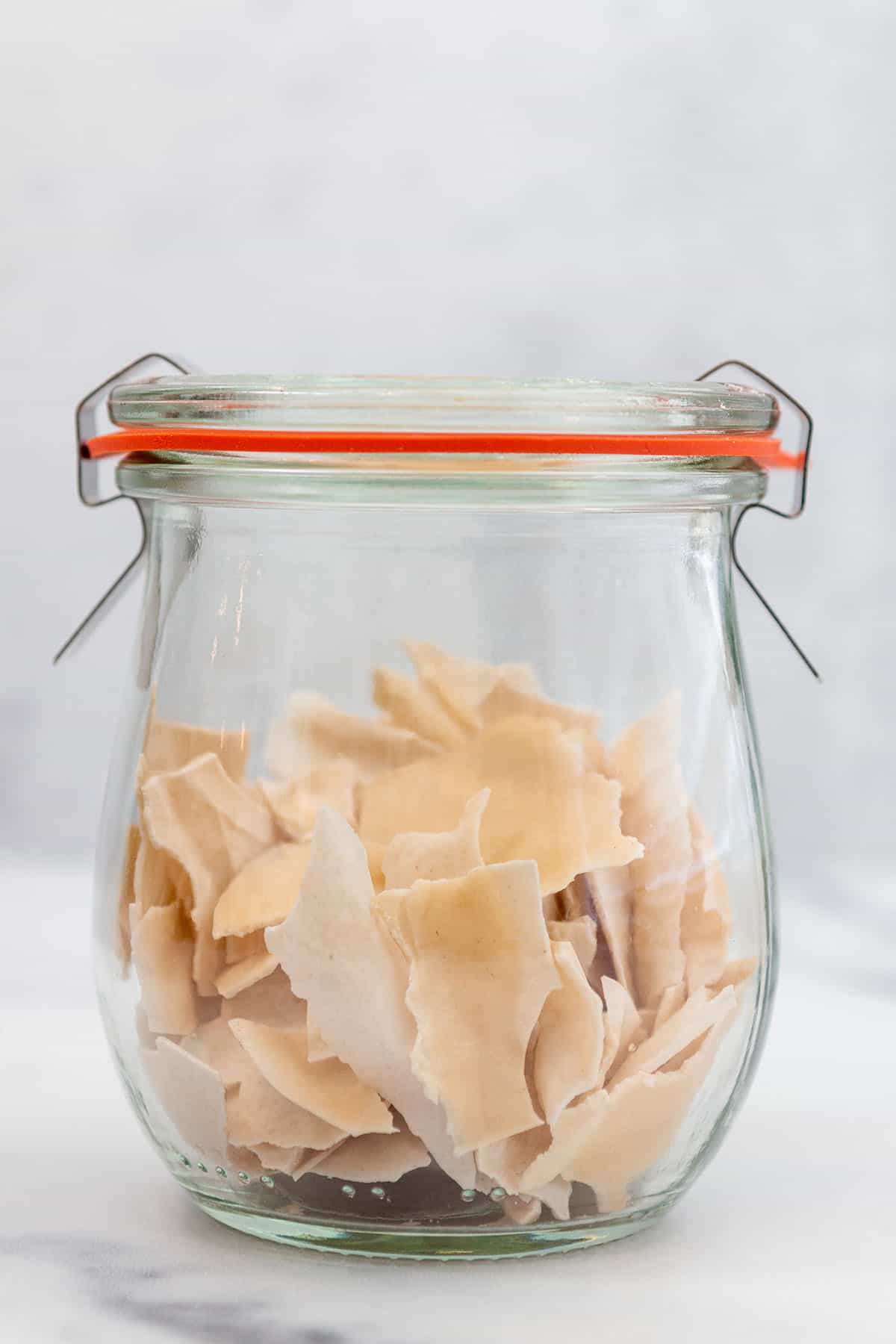
Once you have successfully dehydrated your sourdough starter it's time to store it.
Keep the dried out flakes in an air tight jar and keep in a dark and cool location.
I like to use either a weck jar or mason jar.
Mark the jar with what it is and the date. Labeling it with "sourdough starter" will prevent anyone who comes across it from just tossing it out.
How Long Does a Dehydrated Starter Last
When properly done and stored correctly, that starter can live a very long time!
It doesn't hurt to redo the process just to make sure you have the most active and fresh dried starter, but if done properly it will last many years.
I do not have personal experience, but have heard stories where dried starter was revived after decades of storage.
How to Revive
Step 1: Start by breaking the starter up into really small pieces or grind into a powder.
Step 2: Place 20 grams of the sourdough chips into a glass jar or bowl. Reserve any extra to keep as a backup.
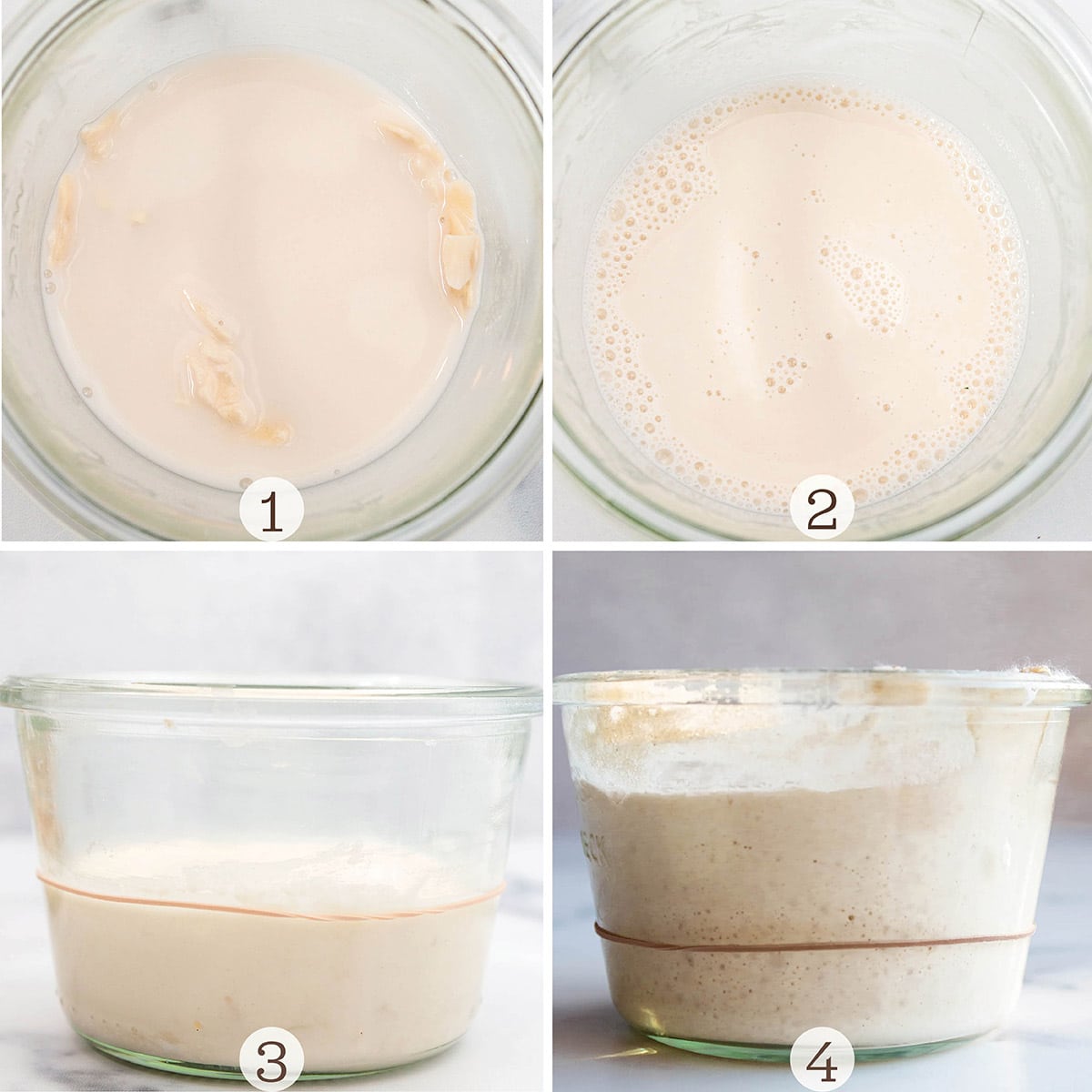
Step 3: Add in 50 grams of warm filtered water and let the chips dissolve. I like to warm the water up to 80-90 degrees. (This is the only time you will need to put warm water in.) (Image 1).
Step 4: It can take 30-45 minutes to get them to completely dissolve. Mix with a fork every 10 minutes to help the process. (Image 2). Step 5: Next, add in 50 grams of flour and mix well. It should be a little thick. (Image 3).
Cover and let it sit for 12 hours. There may not be any change at all. That is okay! It may need a few feedings to fully wake up.
Step 5: After 12 hours, discard half, leaving about 50 grams of starter. Then, feed it 50 grams of flour and 50 grams of filtered water. Mix well. Cover and let it sit for another 12 hours.
Typically, it has taken me 3 feedings to get it doubling in size.
Step 6: Repeat the feeding process every 12 hours until it is doubling in size. (Image 4).
This starter was back to doubling in size after 3 feedings. This is still a lot faster than having to make a new starter which can take weeks.
Once the starter it is active again, follow a general feeding schedule.
Now your starter is ready once again to make sourdough bread or dozens of sourdough discard recipes.
Sourdough Resources
See more Sourdough Resources →
Sourdough Recipes
See more Sourdough Recipes→
Was this information helpful? If you enjoyed it, please leave a 5-🌟rating and a comment in the recipe card below.
*Let's Connect! Follow along on Instagram, Pinterest or subscribe to receive emails!
📋Recipe
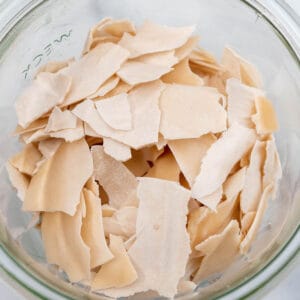
How to Dehydrate a Sourdough Starter
Equipment
- Glass Jar
Ingredients
- 1-2 Cups Active Sourdough Starter
Instructions
How to Dehydrate
- Start off by feeding the starter with equal parts flour and water in grams and let it sit 6-8 hours to rise.
- Once the starter is active, take a baking sheet and line it with parchment paper. Take a few cups of active starter and spread it out on the parchment paper. It just needs to be a thin even layer. It will feel like you are painting the parchment with the starter. If some areas are thicker than others it won't dry at the same rate. Try to make it as even and thin as possible.
- Let the pan sit out until the starter is complexly dry and brittle. This can take 12 hours up to a couple of days depending on the atmosphere of your house and how thick it was.
- When it's ready, it should crack and break up really easily. Once it is dry, peel it off the paper and break it up into pieces. It will look like dried out paint chips.
- Once dried out, store in an air tight glass jar in a dark and cool location.
How to Revive Dried Sourdough Starter
- Start by breaking the starter up into really small pieces.
- Place 20 grams of the sourdough chips into a glass jar or bowl. Reserve any extra to keep as a backup.Add in 50 grams of warm filtered water and let the chips dissolve. I like to warm the water up to 80-90 degrees.It can take 30-45 minutes to get them to completely dissolve. Mix with a fork every 10 minutes to help the process.
- Add in 50 grams of flour and mix well. It will be a little thick. Cover and let it sit for 12 hours. There may not be any change at all. That is okay! It may need a few feedings to fully wake up.
- After 12 hours, discard part of the starter leaving 50 grams. Feed it 50 grams of flour and 50 grams of filtered water. Mix well. (You do not need warm water when feeding.)Cover and let it sit for another 12 hours.
- Repeat the feeding process every 12 hours until it is doubling in size.
- Once active, it can be used right away to make bread.


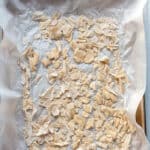
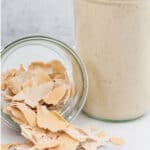

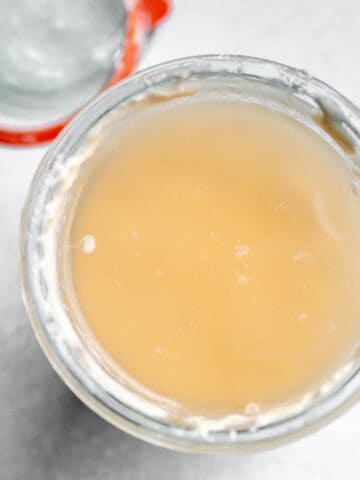
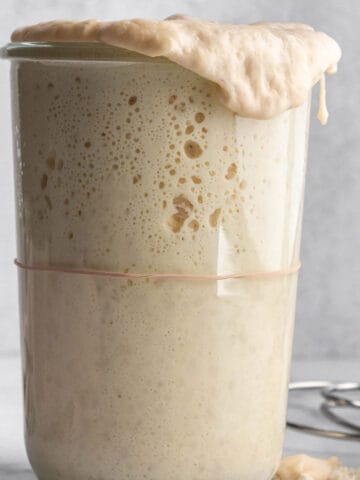

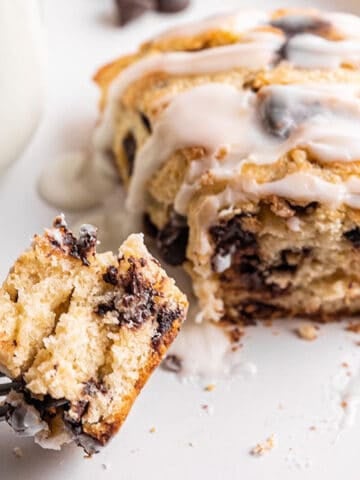
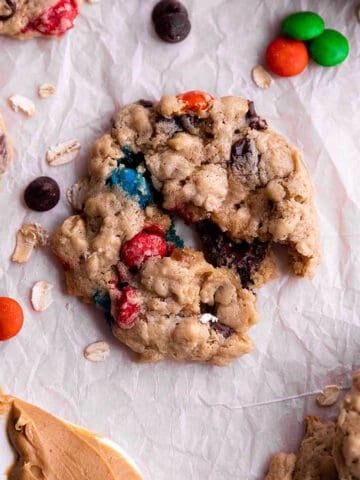
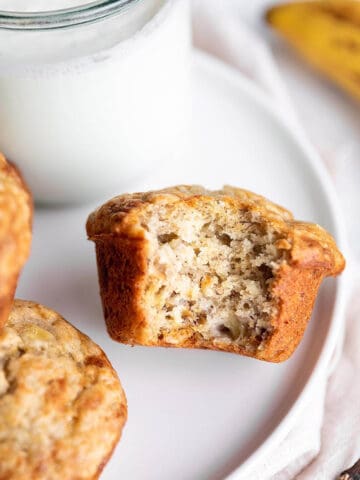
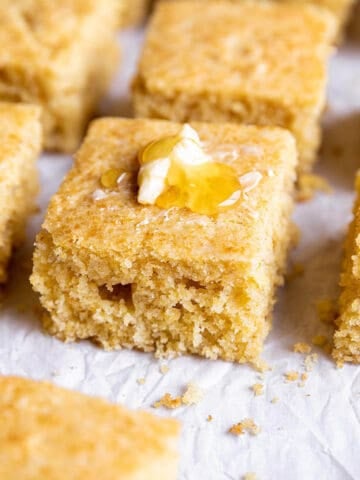
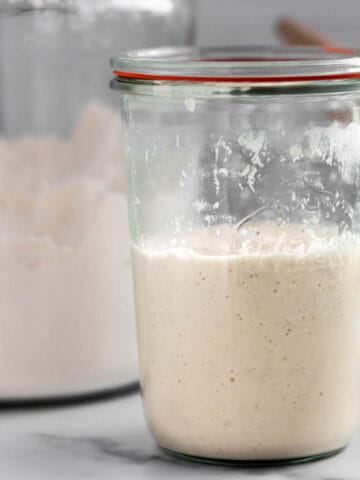
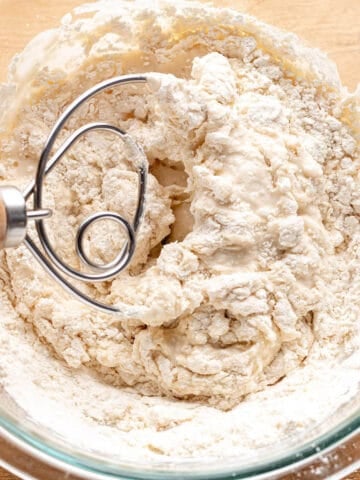
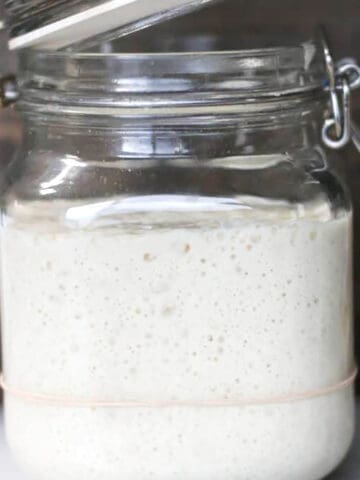
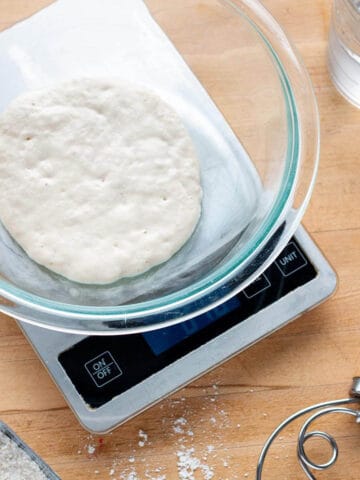
'Can you use starter that you feed the day before or must you use the starter that you feed 6 hours earlier?
Yes you can use inactive starter.